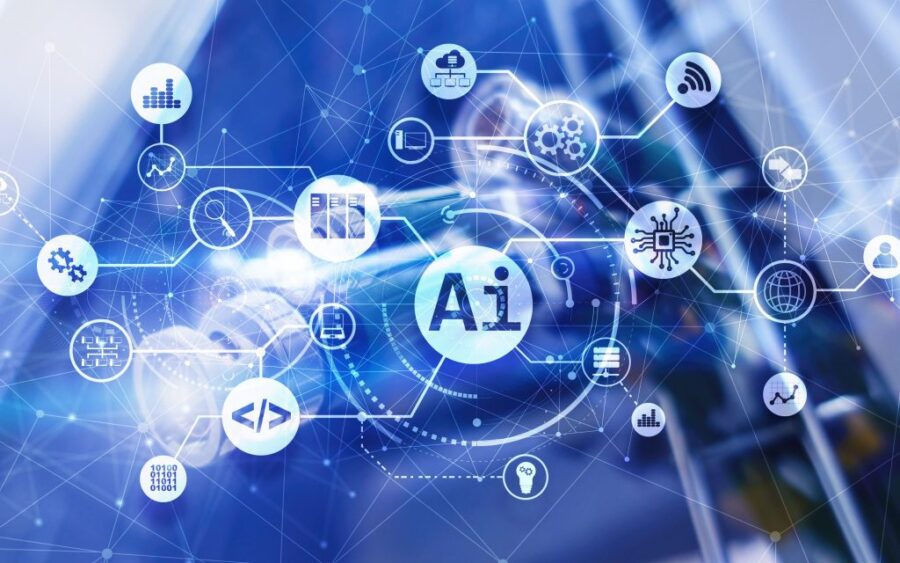
Not too long ago, Artificial Intelligence was a vague concept that mostly found its relevance in science fiction movies and books. But last year when ChatGPT, the Large Language Model by OpenAI was launched, it disrupted the whole AI market. This incredible platform got more than 100 million users in just 3 months of its launch surpassing other major platforms including Instagram, Facebook, or X (formerly Twitter.)
Not just LLMs, AI technology has been transforming the way we live and work. Every industry, from healthcare to finance, transportation, and manufacturing has changed the way they operate. Open-source AI is one of the major factors for this technological revolution.
Open-source artificial intelligence technology refers to the platform where the underlying code for AI tools and algorithms is freely available for the public to use, modify, and distribute as per their liking. This openness of the technology not only encourages collaboration, and transparency but also promotes democratization and innovations of AI.
Advantages of open-source AI
Now Google, OpenAI, and Microsoft aren’t the only leaders in AI technology. Though ChatGPT works fine, open-source AI also offers several advantages over traditional and proprietary AI solutions.
- Transparency
Proprietary AI is often “black box” AI technologies lacking transparency and accountability. Open-source code helps developers to inspect and understand how AI algorithms work.
- Collaboration
The above transparency in AI codes also encourages trust and collaboration where developers can come together to build and improve existing work and create even more powerful solutions.
A recent study by the Linux Foundation found that 84% of developers think open-source AI is a great way to build trust in AI systems.
- Democratization of AI
Open-source AI removes the financial barriers often associated with proprietary solutions. Therefore, individuals or start-ups having a cash crunch and lacking resources can leverage cutting-edge AI technologies for their projects.
According to IDC, global spending on AI will reach $576.6 billion by 2024 that highlights the potential of open-source AI in the growing market.
- Promotes Innovation
Since open-source models give access to a global community of developers who work together to improve AI tools and algorithms, the collaboration between them often encourages innovation to develop new and exciting AI products and services.
- Cost-Effective
Open-source AI helps to eliminate the licensing fees associated with proprietary solutions and helps organizations experiment with AI and develop prototypes without shedding hefty prices.
Learn how to leverage the power of open-source AI with the help of global AI certification programs like Certified Artificial Intelligence Engineer (CAIE™)
Popular open-source AI projects and frameworks
TensorFlow and PyTorch
TensorFlow and PyTorch are popular AI frameworks that are used to build and train deep learning models such as image recognition, natural language processing, large language models like GPT-4, and more. TensorFlow is a Google offering and PyTorch is backed by Facebook. Both these frameworks have extensive documentation and support from large user communities.
Keras
Keras is a high-level API that simplifies the development process of deep learning models by sitting on top of TensorFlow. It helps AI developers to focus on the logic of their models without getting confused about the underlying code.
OpenAI
The founder of ChatGPT, OpenAI is a non-profit research company that significantly contributes to the development of open-source AI. Gym is a popular toolkit developed by them for training reinforcement learning algorithms and is used in robotics and game-playing AI.
Scikit-Learn
Scikit-learn is a very user-friendly library that provides users with a wide range of machine-learning algorithms for projects on classification, regression, and clustering. It is a great starting point for beginners because it is very easy to use and has excellent documentation and support community.
OpenCV
OpenCV is another open-source library helpful for computer vision tasks like image and video analysis. It has got a huge application in image recognition, object detection, and self-driving vehicles.
Real-world applications of open-source AI
- Facial recognition systems for security applications
- Object detection for self-checkout in stores
- Kaldi is a powerful toolkit for voice assistants like Siri and Alexa
- Open-source NLP libraries spaCy and NLTK are used for customer service chatbots
- Analysis of medical images and early detection of diseases
- Fraud detection, and many more.
Challenges of using open-source AI
Though open-source AI offers several advantages to individuals and organizations in developing indigenous AI systems, they also pose significant challenges that need to be addressed such as:
- Security concerns as the code is openly available and its vulnerabilities can be easily exploited.
- Bias in data and its quality which can impact the performance and fairness of AI models
- No maintenance and dedicated support as offered by proprietary solutions. It only relies on contributions from the community.
Conclusion
The growth of Open-source AI is revolutionizing the way we develop and use artificial intelligence technology. It encourages collaboration, and transparency, and promotes innovation resulting in the development of more powerful AI tools and applications. With the open-source AI, the technology has become accessible to the general public and organizations who want to try their hands-on developing and experimenting with their own AI systems. As the technology continues to grow, open-source AI can prove to be highly beneficial in democratizing AI, driving innovations across various industries, and making a safer environment for the future of AI.

